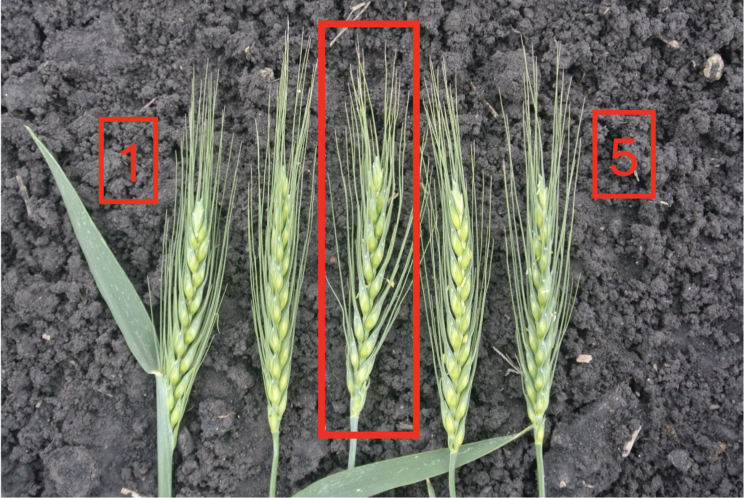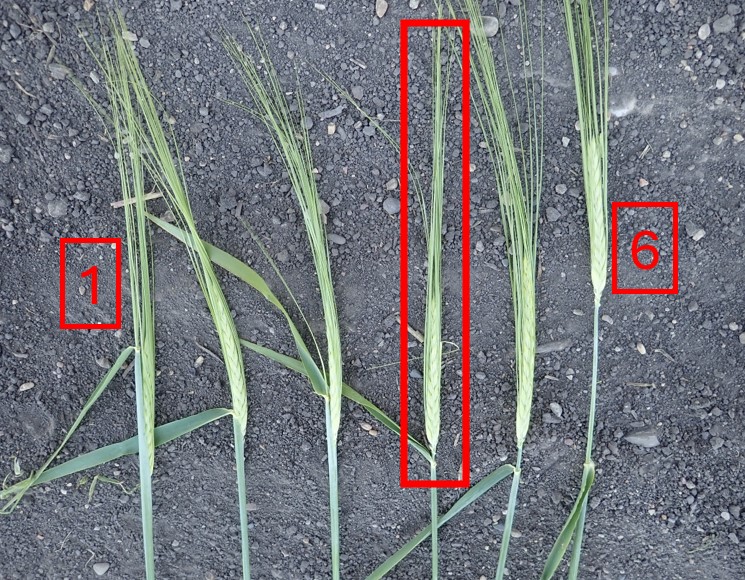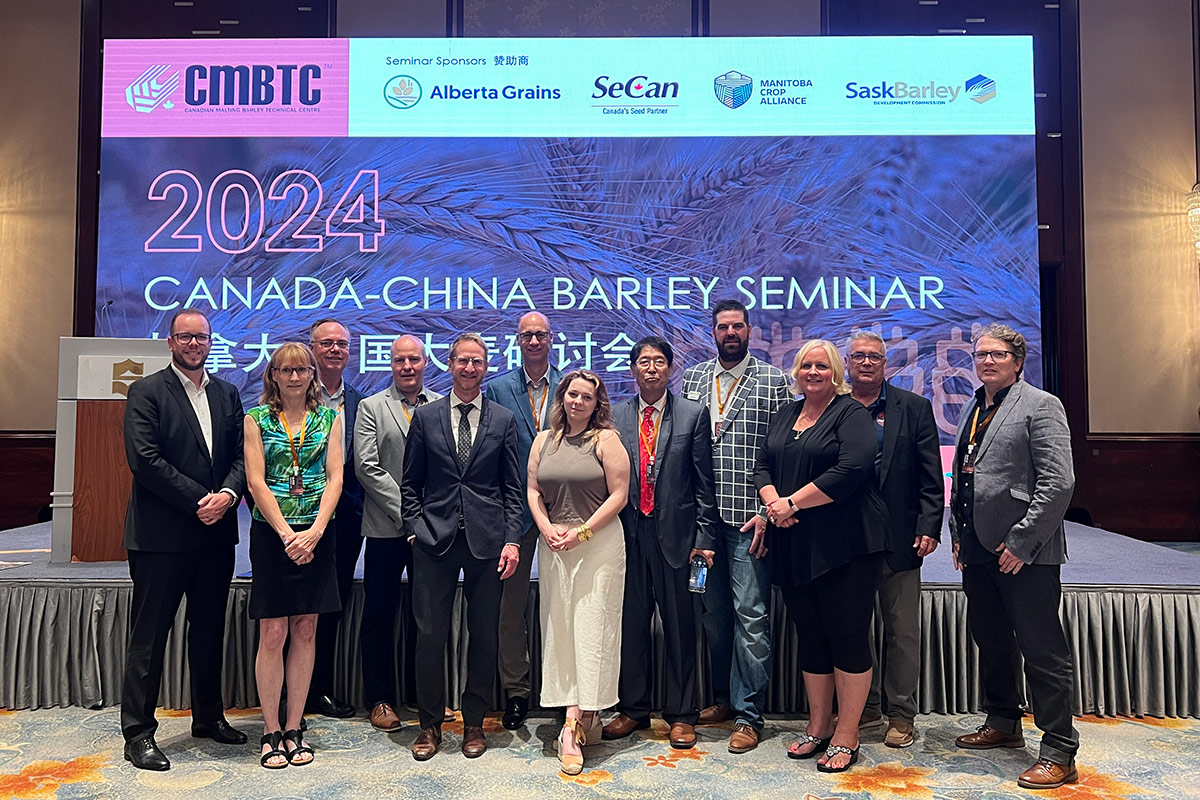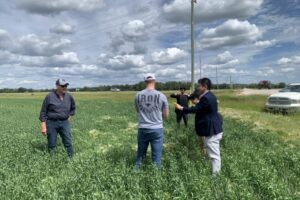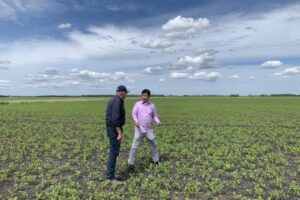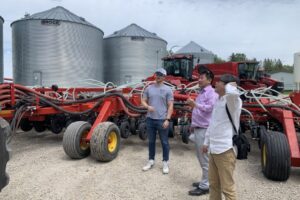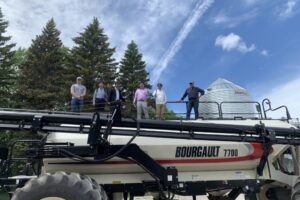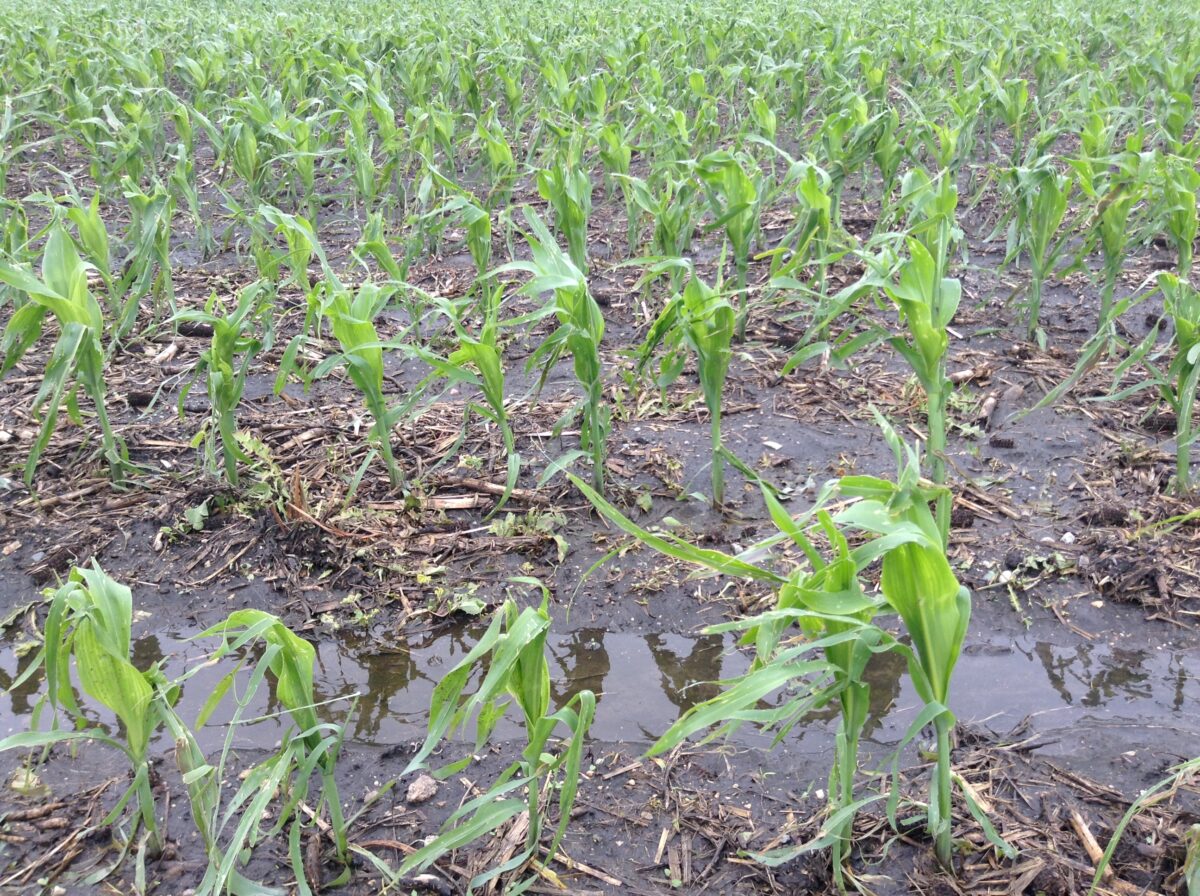Maryse Bourgault, assistant professor, University of Saskatchewan

Maryse Bourgault lives in Saskatoon, where she is an assistant professor and the Western Grains Research Foundation Integrated Agronomy Research Chair at the University of Saskatchewan. She completed her bachelor’s degree in environmental sciences at McGill University in Montreal then started a master’s degree that she later upgraded to a PhD. She then completed her first postdoc with CSIRO, Australia’s national science organization in Brisbane, followed by her second postdoc at the University of Melbourne.
Where did you work before the University of Saskatchewan?
I was working at Montana State University as an assistant professor based at the Northern Agricultural Research Center in Havre, Montana. Before that, I was working as an extension agronomist with the Queensland State Department of Primary Industries and Forestry. Altogether, I spent nine years in Australia. I was only supposed to be there for seven months to finish my PhD and I ended up getting my citizenship, so I can retire on a beach someday!
What got you interested in this area of work?
Being an environment student, I had an obvious passion to make sure our existence on earth is not destroying the environment for everybody else. I was doing a minor in international development and when you go into a community to try and help people, the first thing you address is their basic needs. People need to eat before they will be convinced to the protect the environment.
Basic needs are fundamental and unless you address these, you can push as much as you want on environmental measures, but it is not going to have much impact. That is how I became interested in agriculture. I did a master’s where we were lucky to be sent to Uzbekistan, where they deal a lot with irrigation. Unfortunately, the expansion of irrigation led to the disappearance of the Aral Sea, so they are actively looking to reduce irrigation water use while maintaining agricultural productivity.
I started with irrigation and looking at the environmental impact it had compared to environments like Australia where there is next to no irrigation, yet they are still able to grow plenty of wheat and different crops. I became really interested in dryland agriculture and investigating how we can improve it. A lot of our current irrigation systems depend on water that comes from glaciers, and we know that a lot of glaciers are disappearing. You and I may not see this, but our grandchildren will probably see a world where irrigation water isn’t there, unless we do something to change and reverse that situation.
Tell us a bit about what you are working on at the university.
In a current project, Making cover crops work with grain cropping systems in the Canadian Prairies, partially funded by Manitoba Crop Alliance, I am collaborating with Yvonne Lawley (University of Manitoba) and Linda Gorim (University of Alberta) to investigate how to include cover crops into no-till conventional farming.
In this experiment we are trying different cover crop establishment timings and different cover crop species in canola and wheat. The idea is to enable farmers to incorporate cover crops and their benefits into current cropping systems. The concern is always that we have limited moisture in the Prairies, and if you are growing a plant then presumably that plant is using some of that water. So, can we have enough of those benefits, with nitrogen inputs for example, to compensate? Or can we improve rainfall infiltration to compensate for the water use those plants are using? That is where we are trying to make it work in current systems.
With the chair position, I am trying to have a systems approach to research. Instead of testing one product or one solution to deal with a problem, we are looking at how to design the entire cropping systems in time and space. This means crop rotations, but also testing systems like intercropping, cover crops, and reintegrating forage and livestock into grain production systems. I tend to say that we try things that might fail for farmers, because my salary isn’t linked to our results, so we can afford to try things and try again, until we make it work.
What can you say about the value of farmers providing funding and support to your organization?
Farmer participation and financial contributions to our research are quite important. In our research we are looking at practices, so we do not have a patentable product to sell afterwards or another revenue source that can fund continuing research. Most of the funding we receive comes from farmers, and I think it is useful for scientists to know the questions that we are investigating and the funding we have are because farmers are also interested.
How does that farmer funding and support directly benefit farmers?
Well, sometimes failures are just as useful for farmers as practices that are successful. There are financial risks involved with some of these practices that we can evaluate and take those risks on to learn collectively and share the results with farmers. In our research we hope we can provide better solutions or possibilities to farmers.
Compared to other places in the world, Canadian farmers are quite involved and supportive of our research, so thank you! It makes a significant difference to our research, our knowledge and research careers because there are many interesting opportunities.
How do you spend your time outside of work?
I garden, which is a bit stereotypical for a plant scientist, but I don’t water my plants a lot! I often joke that is why I decided to investigate drought, because I am too lazy at watering my plants. I am also a big reader.
Who or what inspires you?
Students inspire me. It sounds cliché when teachers say it, but it is true. We get into these conversations in class, and I am amazed because as scientists, sometimes we become a little cynical with all the admin and “boring stuff” in the background that can get a bit too much at times, but students have such fresh ideas and optimism about the future. That inspires me.
What is the best piece of advice you have received?
Perhaps this person didn’t think that this would be so important in my life, but someone told me once it is important to think about what you really want in life. I know it sounds a little generic, but often we go through life one step after the other and keep running that hamster wheel. It is important to stop, think and figure out exactly what makes you happy and what you want to do with your life because it goes faster than you think.


 By Jonothan Hodson
By Jonothan Hodson



